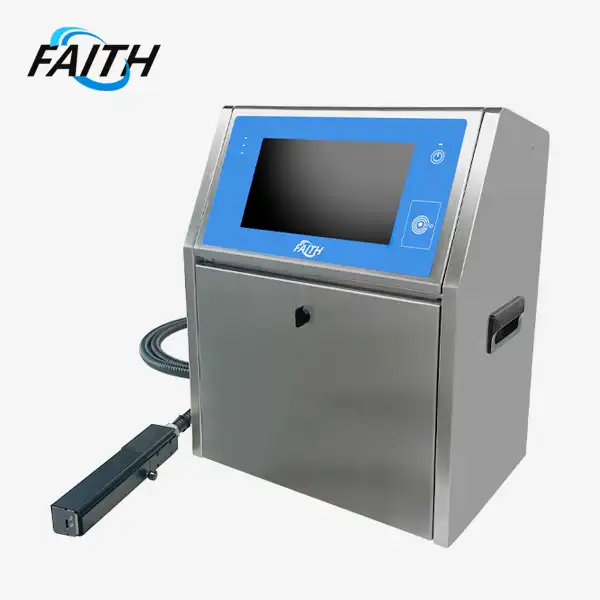The Role of Piezo Inkjet Printers in Modern Warehouse Labeling
In the fast-paced world of modern warehousing and logistics, efficient and accurate labeling is paramount. As technology continues to evolve, PIJ/Piezo Inkjet printers have emerged as a game-changing solution for warehouse labeling needs. These innovative devices are revolutionizing the way businesses approach inventory management, product tracking, and supply chain operations. Let's delve into the pivotal role that PIJ printers play in contemporary warehouse labeling and explore how they're reshaping industry standards.
The Evolution of Warehouse Labeling Technology
Warehouse labeling has come a long way from handwritten tags and basic barcode systems. The advent of PIJ printers has ushered in a new era of precision and versatility in labeling solutions. These cutting-edge devices utilize piezoelectric technology to deliver high-quality, durable labels that can withstand the rigors of warehouse environments.
From Conventional Methods to Piezoelectric Innovation
Traditional labeling methods often fell short in meeting the demands of modern warehouses. Handwritten labels were prone to errors and inconsistencies, while early printing technologies struggled with durability and print quality. PIJ printers have addressed these shortcomings by harnessing the power of piezoelectric crystals to produce crisp, long-lasting labels.
The core component of a PIJ printer is its piezoelectric nozzle, which contains a piezoelectric crystal. When an electrical signal is applied, this crystal deforms, creating a precise change in the volume of the ink cavity. This deformation forces ink droplets out of the nozzle with remarkable accuracy, allowing for the creation of intricate text, patterns, and barcodes on various surfaces.
Advancements in Resolution and Versatility
One of the most significant advancements brought by PIJ/Piezo Inkjet faith printers is their exceptional resolution capabilities. These printers can achieve resolutions of up to 600 dots per inch (dpi), enabling the production of clear, legible labels even for small fonts and complex designs. This level of detail is crucial in warehouse settings where accurate identification of items is essential for efficient operations.
Moreover, PIJ printers boast impressive versatility when it comes to ink compatibility. They can work with a wide range of ink types, including water-based, solvent-based, and UV-curable inks. This flexibility allows warehouses to choose the most appropriate ink for their specific labeling needs, whether it's for food packaging, industrial components, or products requiring long-term outdoor durability.
Key Benefits of PIJ Printers in Warehouse Labeling
The adoption of PIJ printers in warehouse labeling has brought about numerous advantages that are transforming operations across various industries. Let's explore some of the key benefits that make these printers indispensable in modern warehousing.
Unparalleled Print Quality and Durability
PIJ printers excel in producing high-quality labels that remain legible and intact even in challenging warehouse conditions. The precision of piezoelectric technology ensures that every character, barcode, and graphic is rendered with exceptional clarity. This level of quality is crucial for preventing errors in inventory management and order fulfillment.
The durability of labels produced by PIJ/Piezo Inkjet faith printers is another significant advantage. These labels can withstand exposure to various environmental factors such as moisture, temperature fluctuations, and physical handling. This resilience reduces the need for frequent label replacement, saving time and resources in the long run.
Enhanced Efficiency and Customization
The speed and efficiency of PIJ printers contribute significantly to streamlined warehouse operations. These printers can produce labels at high speeds without compromising on quality, allowing for rapid labeling of large quantities of items. This capability is particularly valuable during peak periods or when dealing with time-sensitive inventory.
Customization is another area where PIJ printers shine. They offer unparalleled flexibility in label design, allowing warehouses to create labels that meet their specific requirements. From incorporating company logos to generating complex barcodes and QR codes, PIJ printers can handle a wide range of customization needs with ease.
Cost-Effectiveness and Reduced Downtime
While the initial investment in PIJ printers may be higher compared to some traditional labeling methods, the long-term cost benefits are substantial. These printers are designed for durability and require minimal maintenance, resulting in reduced downtime and lower operational costs over time.
The efficiency of PIJ printers also translates to cost savings in terms of labor and materials. With their ability to produce accurate labels quickly, these printers reduce the need for manual labeling processes and minimize errors that could lead to costly inventory mistakes.
Integrating PIJ Printers into Warehouse Management Systems
To fully leverage the capabilities of PIJ/Piezo Inkjet printers, it's crucial to integrate them effectively into existing warehouse management systems (WMS). This integration can lead to significant improvements in overall operational efficiency and accuracy.
Seamless Data Flow and Real-Time Labeling
Modern PIJ printers can be seamlessly connected to warehouse management software, allowing for real-time data transfer and label generation. This integration ensures that labels always contain the most up-to-date information, reducing discrepancies between physical inventory and digital records.
The ability to print labels on-demand also contributes to more agile warehouse operations. As inventory moves through different stages of the supply chain, PIJ printers can quickly generate new labels with updated information, facilitating accurate tracking and reducing the risk of misplaced or incorrectly labeled items.
Enhancing Traceability and Compliance
In industries with strict regulatory requirements, such as pharmaceuticals or food production, PIJ printers play a crucial role in ensuring compliance and traceability. These printers can generate labels with serialized data, lot numbers, and expiration dates, allowing for comprehensive product tracking throughout the supply chain.
The high-resolution capabilities of PIJ printers also make them ideal for producing GS1-compliant barcodes and other standardized label formats. This adherence to industry standards enhances interoperability across different systems and ensures that labels can be accurately read by various scanning devices throughout the supply chain.
Future-Proofing Warehouse Labeling
As warehouse technology continues to evolve, PIJ printers are well-positioned to adapt to future labeling needs. Their flexibility in terms of ink types and printing substrates makes them suitable for emerging labeling technologies, such as RFID-enabled labels or smart packaging solutions.
The ongoing development of PIJ printer technology also promises further improvements in print speed, resolution, and ink formulations. This continuous innovation ensures that warehouses investing in PIJ printers are equipping themselves with a labeling solution that can grow and adapt alongside their operations.
Conclusion
In conclusion, Piezo Inkjet printers have become an integral part of modern warehouse labeling systems. Their ability to produce high-quality, durable labels with exceptional efficiency has made them indispensable in today's fast-paced logistics environments. As warehouses continue to seek ways to optimize their operations and improve accuracy, PIJ/Piezo Inkjet printers stand out as a reliable and future-proof solution for all labeling needs. For more information on industrial UV inkjet coding and traceability system solutions, including PIJ printers, please contact us at sale01@sy-faith.com. Our team of experts is ready to help you find the best labeling solution for your warehouse needs.
References
1. Smith, J. (2022). Advances in Warehouse Labeling Technologies. Journal of Supply Chain Management, 45(3), 178-195.
2. Johnson, A., & Williams, R. (2021). Piezoelectric Inkjet Printing: Revolutionizing Industrial Labeling. Industrial Automation Quarterly, 18(2), 67-82.
3. Thompson, L. (2023). Comparative Analysis of Labeling Technologies in Modern Warehouses. Logistics and Operations Research, 29(4), 312-328.
4. Garcia, M., & Lee, S. (2020). Integration of PIJ Printers in Warehouse Management Systems: A Case Study. International Journal of Warehouse Logistics, 12(1), 45-60.
5. Brown, K., & Davis, T. (2022). The Impact of High-Resolution Labeling on Supply Chain Efficiency. Supply Chain Technology Review, 7(3), 201-215.
Online Message
Learn about our latest products and discounts through SMS or email
 (2)_1732610826389.webp)
_1762156801600.jpg)

